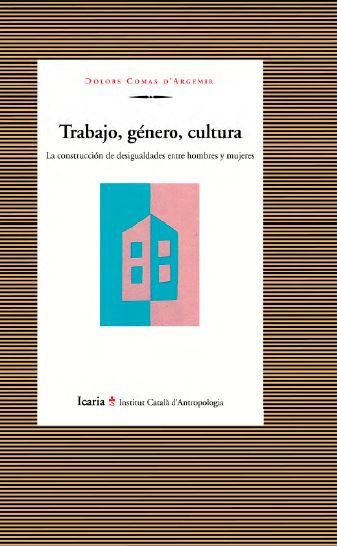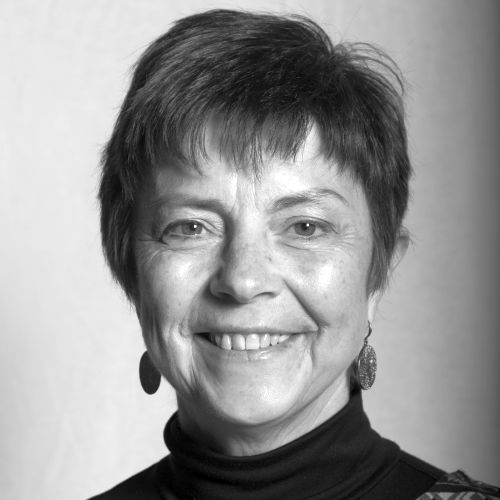Why our model of care for dependent people needs to change
- Dossier
- Mar 22
- 8 mins

There are long-standing deficiencies in care for dependent people, and the pandemic has only made them worse. Given the public system’s shortcomings, the most common option is to take on a domestic worker. Care homes, the second solution, have become a highly lucrative business. If we are to guarantee dignified ageing for all, we must change our current model.
The pandemic has been especially cruel for those who live in residences for elderly people or people with disabilities. In early 2022, 35,418 people had died of Covid-19 or compatible symptoms in care homes in Spain.[1] This constitutes 38.6% of the virus’s total death toll in the country: a very high proportion that was even worse in the early months of the pandemic, when it reached 72%. These residences became the epicentre of an unprecedented health and social crisis. Social, political and cultural factors that attribute little importance to social care, especially in terms of older adults and people with disabilities, explain why care homes and the wider social care sector were pushed aside at the start of the pandemic, from both an epidemiological and a political standpoint.[2] But it is important to emphasise that there are long-standing deficiencies in our model of care for dependent people, and the coronavirus crisis has only made them worse and more obvious, as we have discovered in the research we have carried out into this subject, on which this article is based.[3]
Care for dependent people is built around the family as the fundamental pillar and women as the main carers. Public policies in this area arrive later than other social policies, they generate fewer rights and, on top of that, in the case of Mediterranean countries, they are accompanied by unreported employment and job insecurity. In Spain, Law 39/2006, of 14 December, for the promotion of personal autonomy and care for people in a situation of dependence came into effect in 2007, at the beginning of a significant economic crisis and heavy cuts to public spending, which meant that it was not developed any further. Financial grants, subsidisation of residential places and private management of services were prioritised. Measures to support home care, which allows people with care needs to stay living in their home, were entirely insufficient.
Domestic workers as carers
Given the lack of State support for care, the most common option for families is to take on a domestic worker as a carer. This creates a clearly tiered architecture of care, based on the sacrifice of the women in the family and the work of migrant women with highly insecure employment conditions. Further, the poorest families cannot afford the resources the market provides for care, and often, women have to reduce their working hours or leave their job to fulfil their relative’s care needs. The current model for the social organisation of care is held up by social and gender inequalities.
Families consider sending their loved one to a residential centre because it has become practically impossible to care for them at home, and so begins a tough journey to secure them a place. This is not difficult in a private home, but it is almost impossible in public centres. Before the pandemic, the waiting list for a place in a residence in Barcelona, for example, could stretch to three, four, even five years. Inevitably, this generates a process of social selection. Anyone with little money has to wait for years, which has repercussions on exhausted families barely able to cope. In the meantime, there is the option of taking a place in a private care home, but this is expensive. Another possibility is to apply for a service-linked grant (PEV by its initials in Catalan), but to receive 400–700 euros in the form of this grant, you have to be able to pay the remaining 1,500 or 2,000 euros for the cost of the place in the residence, and many cannot afford this. This is proof of the social selection dynamic held up by public policies.
[2] Daly, M., ‘Covid-19 and care homes in England: What happened and why’. Open in a new window. Social Policy & Administration, 54 (7): 281–298 (2020).
[3] Comas-d’Argemir, D. and Bofill-Poch, S., ‘El cuidado importa: Impacto de género en las cuidadoras de mayores y dependientes en tiempos de la COVID-19’. Fondo Supera Covid-19 Santander-CSIC-CRUE (2021).
The commercial private sector controls 90% of residential spots in care homes in the city, many of which are paid for with public money through the subsidisation of places.
Long gone is the era of institutions welcoming people in need, with a marked focus on care, which were stigmatised for this reason. The biggest change took place in the 1980s, when it became widely accepted that elderly people (and not just those who were disadvantaged) had the right to care. Local entities and regional governments began to build residential centres, though only to a very limited extent, which led to the expansion of private care home companies. In the city of Barcelona in 1966, there were only 18 homes, and none of them was private and commercial: 4 were public and 14 were non-profit, most of which were run by religious orders.[1] In 2019, there were 241 care homes in the city, the vast majority of which were private, commercial entities (78.4%), while very few were non-profit companies (11.2%) or publicly owned (10.4%).[2] Given that many public care homes have outsourced their management, we can say that the commercial private sector controls 90% of residential spots in care homes in the city, many of which are paid for with public money through the subsidisation of places.
The passing of the Spanish Law on Dependence in 2006 marked a significant change to the previous situation. Until that point, a sort of ‘retirement home’ was the predominant model, where, alongside people who required care, other, more active older people lived, either to accompany the former group or because they did not want to live alone. The number of care homes shot up, and increased public investment attracted large companies and investment funds. The profile of the residents also changed, as the public places allocated by the public administration are to care for people with a dependence of grade 2 or 3. As a result, the current residents of care homes are very elderly (80.4% of them are aged over 80) and most of them (also 80%) are women.[3]
[1] Barenys, M. P., ‘Las residencias de ancianos y su significado sociológico’. Revista Española de Investigaciones Sociológicas, 53: 121-135 (1992).
[3] Imserso, ‘Servicios sociales para personas mayores en España. Enero 2002’. Open in a new window. Boletín sobre Envejecimiento: Perfiles y Tendencias, 8 (2002).
 Illustration. © Margarita Castaño
Illustration. © Margarita CastañoWhile the nineties saw the growth of big companies in the healthcare sector, now, multinational companies with all sorts of activities are seeing success.
A highly lucrative business
Care homes have become a business that can be highly lucrative. The statement to this end on the Vitalitas group website to attract investors is explicit: ‘Call us and we will inform you of how profitable it can be to invest in a business that, thanks to increasing life expectancy, is growing and getting stronger.’ While the nineties saw the growth of big companies in the healthcare sector, now, multinational companies with all sorts of activities are seeing success. The private sector is highly heterogeneous, of course, but the general trend is for large companies to dominate. In any case, one striking tendency is the emergence of investment funds in this sector, which are not exactly charitable entities. ‘Our strategy is to grow our specialist asset management activities to deliver increased shareholder value’: this is how the Intermediate Capital Group investment fund describes its mission. This group includes the company DomusVi, which controls thousands of care home places in Spain and in Catalonia. It is worth noting that these groups are also taking an interest in home care services, for which resources are expected to increase sharply in the near future. This phenomenon is not exclusive to Spain, but it is quite specific to the country: as the public were encouraged to buy property in the past, many elderly people own their home, and can therefore use this asset to defray dependence costs. It is no wonder, then, that investment funds see care homes and home care services as a business opportunity or, perhaps more accurately, a chance to make a profit. It is highly significant that we are not seeing the same trend with homes for people with disabilities, for which the structural conditions necessary to make a large profit are not in place. In the case of Barcelona, for example, there are 20 care homes for people with disabilities, and 7 of them are public. All of the companies that manage them – 13 private, 5 from the public sector – are not for profit.
The pandemic has exacerbated the mechanisms of social exclusion that affect elderly people who live in a care home.
To what extent does this presence of the obviously lucrative private sector affect service quality? The manager of a residence has made it clear: ‘Wages are suffering: they’re taking a nosedive’. Other negative effects include not enough staff being hired to be able to ensure a good service, poorer food being provided to residents and lower-quality materials being used day to day. We have seen that, in some homes, care for residents is like a production line. ‘It’s like a factory’. ‘We’re treating people like goods’. These are just some complaints from workers regarding their lack of time to care for residents properly. Care homes currently bear highly institutionalising characteristics: each resident must adapt to the rules and patterns defined by the centre. The pandemic has exacerbated the mechanisms of social exclusion that affect elderly people who live in a care home.
The Covid-19 crisis has revealed a dire need to overhaul our model of care for dependent people, which has proved to be inadequate and insufficient. The current model for care homes and home care is designed based on the management and organisational needs of the companies that provide the services, rather than the people they serve. Getting older should not entail losing the ability to make decisions about our lives. We must ask ourselves how we would like to age to find the key elements needed to build a new model of care. And we must take a look at the value we assign to elderly people in our society.
The two main axes of transformation must be strengthening home care and reducing institutionalisation. This requires a cultural change, innovation and support for a care model that guarantees dignified ageing. To be cared for is a right, not a whim, and it must be guaranteed by the public and community system. Moving forward with these proposals requires political decisions and social commitment. And now is the time to drive these changes.
Recommended publications
 Trabajo, género, cultura. La construcción de desigualdades entre hombres y mujeresIcaria, 1995
Trabajo, género, cultura. La construcción de desigualdades entre hombres y mujeresIcaria, 1995
The newsletter
Subscribe to our newsletter to keep up to date with Barcelona Metròpolis' new developments




